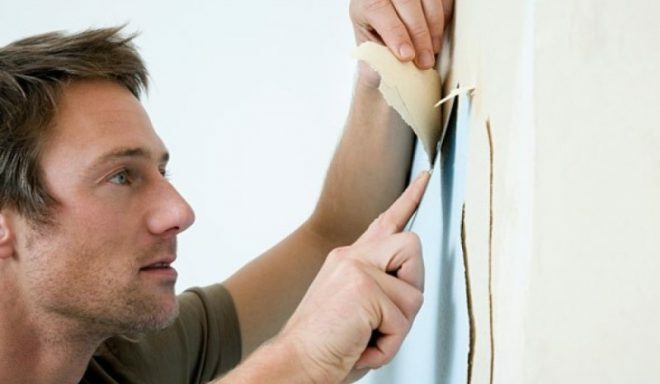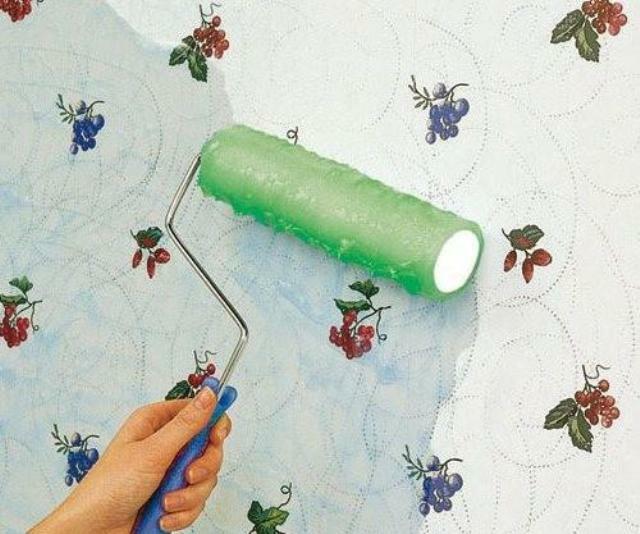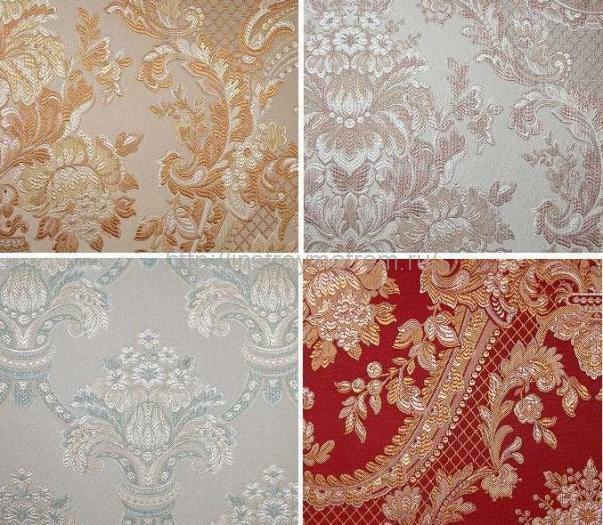Anyone who has ever begun to engage in repair work knows how difficult it is to remove the remnants of old wallpaper that are firmly glued to the walls. Among professionals, there are many tricks, tricks and secrets that allow not only significantly speed up this process, but also save nerves, efforts and money on expensive special chemicals. You will learn exactly such tricks from our article.

Preparatory work
First of all, we will explain why it is so important to remove all old tapestries from surfaces without leaving any residue. The fact is that over time, even the strongest wallpaper sheets cease to adhere evenly to the wall. And if new ones are laid on top of them in a second layer, it is highly likely that in the most unexpected places they will swell or begin to wrinkle.
Attention! Earned on our website kitchen designer. You can familiarize yourself with it and design your dream kitchen for free! May also come in handy wardrobes designer.
In addition, the liquid base adhesive applied to the bottom layer can soften them and act as a peel-off catalyst. Thus, it is worth playing it safe and removing all the leftovers before starting finishing work.
But before proceeding with the removal, it is imperative to take several preparatory steps, which in the future will provide good assistance to the master. What to do:
- Protect the floor from debris that is likely to fall and stick to the floor. For this, a regular plastic wrap is useful, which must be pulled between the baseboards and fixed. After the end of the work, it is easy to remove and remove it along with all the construction waste that appears in the process.
- For the same purpose, the skirting boards themselves should be pasted over with a wide masking tape.
- Using masking tape, you need to shield sockets and switches: since when removing wallpaper liquids are often used, it is not worth the risk, it is better to prevent moisture from getting inside electrical appliances.
- All unnecessary pieces of furniture and decor must be taken out of the room during work. If this is not possible, it is better to cover them with foil or old bedspreads.
After completing the preparatory work, you need to stock up on the tool that you will need to remove wallpaper from the walls.

Required tool
As a basic toolkit for preparing for pasting, you can use:
- Painter's spatulas - both narrow and wide.
- Steam generator or iron with steaming function.
- Painting knife.
- Paint roller.
- A container with water.
- Wallpaper tiger (special scraper tool).
Depending on the number of trellises, their type and amount of work, the toolkit can be either less or more.

Wallpaper removal technology
In order for the removal process to be quick and effective, information about the type of wallpaper with which the room is pasted is useful. In this case, the saved packaging from them or the labels with which they were supplied will be on hand. If this information is lost, it is worth trying different methods, choosing the most effective one.
Another mandatory component of training is safety precautions. It is better to turn off the power supply in the room during the work in order to avoid short circuits.
If the wall covering is very old, it may well come off with a single touch. Try to simply pick up the edge and pull slightly. It is likely that the shabby sheets will fall off by themselves from the slightest tension.
How to remove paper wallpaper?
The standard way to remove any type of tapestry, especially paper tapestries, is to wet them abundantly with liquid. For this, ordinary water is suitable, which must be applied over the entire area evenly and in sufficient quantity. It is optimal to do this with a conventional household spray-atomizer or sponge. Try to absorb moisture into the wallpaper base - it will become pliable from getting wet and will easily move away from the wall. For the effectiveness of soaking, it is better not to rush: on average, each of the canvases will take about 15-20 minutes to get wet.
Use warm water to easily wet old wallpaper. You can also try adding a little vinegar essence or a rinse to it.
After individual areas of the surface are wet, they can be gradually detached by prying with a painting knife or a narrow spatula. Start work from the edge of the sheet, prying on the seams.
Additionally, for certain types of trellises, you can use separate tricks.
How to remove non-woven wallpaper
The dense non-woven material is not easy to detach with simple standard wetting. For this purpose, it is necessary to prepare the coating for removal. Using a paint knife, try to cut through cuts on the canvases. And already on them a sponge with water should be passed. After soaking, pry the cuts with a spatula and remove the wallpaper from the walls.
Useful advice: Try replacing the wetting water with a primer, which is much more effective for removing non-woven tapestries.
Removing vinyl-based wallpaper
Since the vinyl that covers such wallpaper is difficult to get wet, it is easiest to remove it gradually. There are two main ways to remove them:
- Pry up the vinyl layer and try to scrape it off with a trowel, then use a water soak on the bottom paper layer of the wallpaper.
- Using a wallpaper tiger or metal brush, scrape off the vinyl layer and apply moisture to the surface for 10-15 minutes. The procedure may have to be repeated several times.
Additionally, if after removing the trellis did not completely come off and some uncleaned places remained, you can remove them with sandpaper or any suitable grinding technique.
Removing acrylic wallpaper
The acrylic type of wallpaper is removed according to the same principle as non-woven or vinyl: after mechanical treatment with a scraper or knife, they must be soaked in moisture. In the case of acrylic, you can also try steam treatment. A home steam generator or an iron with a vertical steaming function works well for this.
After cutting or rolling on the surface, apply steam to selected areas of the wall and gradually pry the swelling wallpaper with a spatula or knife.

Fabric wallpaper: removal features
Designer textile tapestries are very durable, but sooner or later it's time to change them. The peculiarity of this type is in their multilayer texture: a fabric surface of silk, jute or linen is usually applied to the base layer of thick paper. And the task of the wizard, first of all, is to remove the top layer, which does not lend itself to standard methods.
This can be done by carefully picking up the upper part in the area of the joint of the sheets. For such work, a spatula or knife is useful. Pull on the loose textile edge and peel it off the paper base. Then, as with regular paper wallpaper, water comes to the rescue.

We remove fiberglass correctly
Despite the rather formidable name, removing cullet is not as difficult as it seems. In this case, you need to act with the method already described for vinyl and non-woven, but observing a couple of subtleties:
- First, cut through the wallpaper from the ceiling.
- After that, pull back the top edge and try to peel away from the wall.
- If this fails, cut through cuts on the wallpaper sheet and fill with liquid. In the case of fiberglass, it is better to use special compounds that are available in hardware stores.
- Do not tear off the glass wallpaper in bulk, it is better to act gradually, removing individual sheets.
Liquid wallpaper: removal technique
Strong liquid wallpaper is not easy to remove from walls in their original dry state. But they are simply scraped off, being well saturated with moisture. Therefore, it is easiest to remove them, armed with plenty of hot water and a spray bottle. It is necessary to saturate them with moisture as much as possible, and then completely remove with a wide spatula.
If liquid wallpaper was applied too densely, you can repeat the procedure, removing them part by part.
How to remove wallpaper from drywall
It should be stipulated: all of the above methods are good only for walls of capital buildings or for surfaces covered with plaster. If you need to clean a wall made of a material such as drywall, there are few options left, because with standard moistening, before removal, not only the coating sheets will get wet and deformed, but also the coating itself wall. The only trick is to use a wall primer instead of aqueous solutions.
It is easiest to interact with drywall if it was thoroughly covered with putty before pasting - then the usual methods can be used easily. If the wallpaper was applied to an untreated surface or, even worse, using dense adhesives such as acetyl acrylate or PVA, you should not risk the wall, it is easier to grind the old wallpaper layer and make on top of it pasting.
Special means for removing wallpaper
In building supermarkets and stores today, a large selection of auxiliary finishing products is presented, including specialized liquids for removing wallpaper. In terms of their chemical composition, they can be very different: some remove purely wallpaper coatings, others can be used to dissolve plaster or old cladding.
If you need to remove the old wallpaper as clean as possible, glued on strong glue, having a dense multilayer composition or simply pasted over earlier in several layers, ordinary water may not be with them cope with. And then industrial chemistry will come to the rescue. Most often, there are Metylan, Cleo, Dissoucol brands on the shelves. Each of them gives a good result, but it is extremely important to fully follow the instructions for use and not to violate the dosage.
Removing old wallpaper is not as difficult as it seems, even if you have a large-scale front of work throughout the apartment. Approach the process wisely, choose methods that are suitable for a particular type of trellis, and take your time: the removal process can take time, but if done carefully and consistently, the result will be easy excellent.
average rating 0 / 5. Number of ratings: 0
No ratings yet. Be the first to rate.


